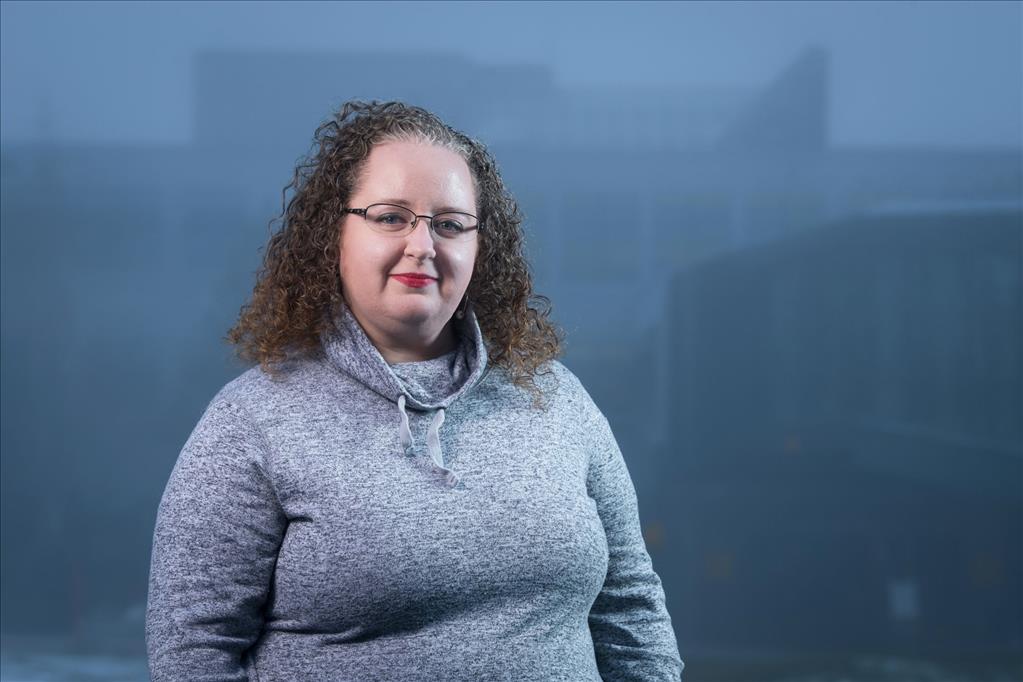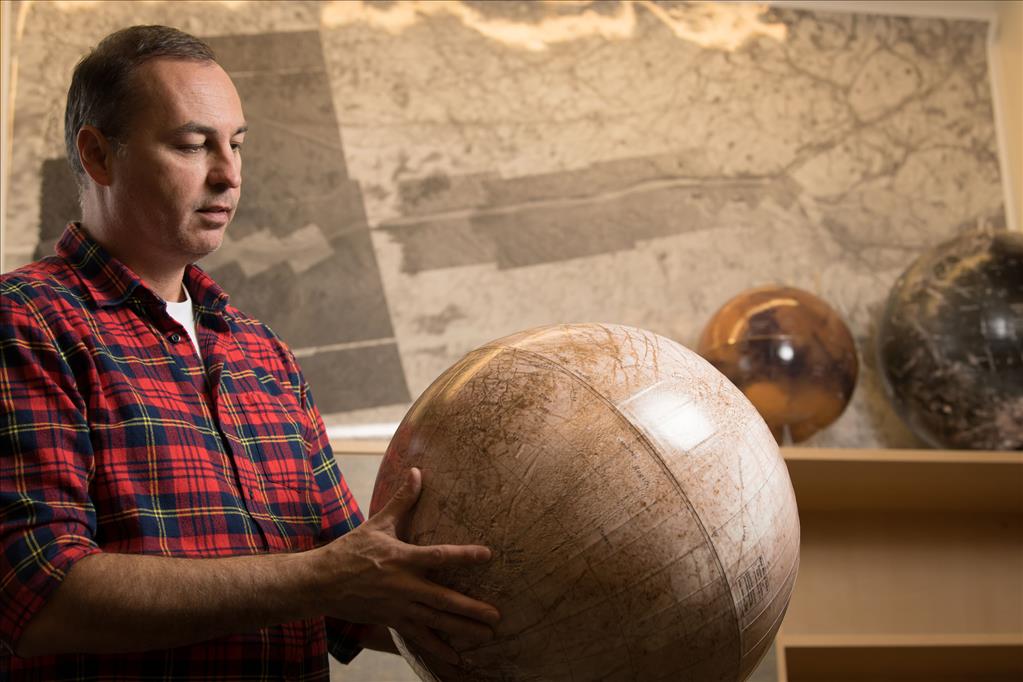UAA play delves into the impact of Alaska’s magnitude 9.2 quake on culture, communities
by Jess |
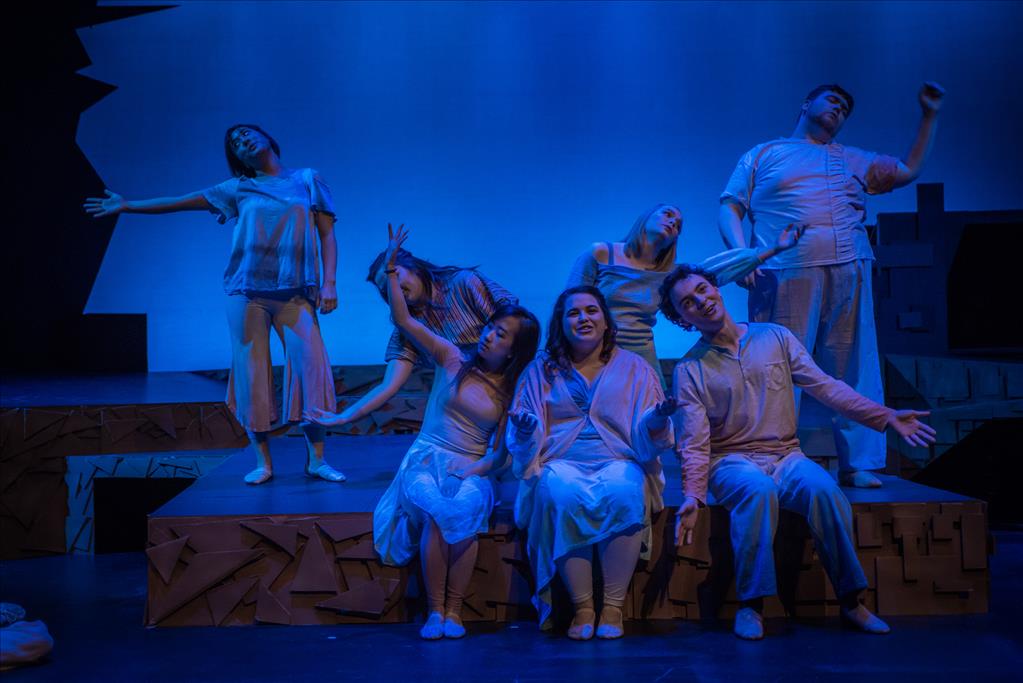
UAA theatre students rehearse "Earthquake '64," a student-created multidisciplinary performance that carefully weaves together the personal stories, local experiences and science behind the 1964 Great Alaska Earthquake. The show will make its Alaska debut Feb. 9-18, 2018 in the UAA Mainstage Theatre. (Photo by James Evans / University of Alaska Anchorage)
At 5:36 p.m. on March 27, 1964, the Pacific tectonic plate scraped north beneath the North American plate in a mountainous area about 56 miles west of Valdez, about 15 miles below the surface. The magnitude 9.2 rupture violently shook Anchorage, Kodiak, Seward, Homer, and other places in Alaska for nearly 5 minutes. It lifted seafloor, unleashing tsunami swells that quickly obliterated entire communities, like Valdez and Chenega, and devastated communities as far away as California. It buckled and cracked the ground in Anchorage's Government Hill and liquefied clay underpinning the Turnagain subdivision, causing many of that neighborhood's homes to slide into Knik Arm. One hundred thirty-one people lost their lives. Nearly 54 years later, UAA theatre students created Earthquake '64, a multidisciplinary performance that carefully weaves together personal stories, local experiences and the science that occurred as a result of that horrific quake. It uses spoken dialogue, movement, and original songs to analyze the ripple effect of the quake in Alaska and the world - changes to people, communities, cultures and scientific understanding. The play debuts Friday. Performances are 8 p.m. Friday and Saturday, and 5 p.m. Sunday, through Feb. 18 in the UAA Mainstage Theatre. Tickets may be purchased at ArtsUAA.com. We talked with UAA's Brian Cook about his students' creation:
What chain of events led to your idea to write this play?
I've been wanting to do a devised piece with our students for a while now. It's a different sort of challenge - to create a script collaboratively, rather than one writer creating something other people perform in. And, it's increasingly popular as a new segment of theatre; it often leads to different kinds of storytelling: physically based or non-linear, say. Most of the theatre done in Alaska is fairly traditional (linear, and for the most part, realistic), and I wanted our students to experience something beyond that. I also wanted to focus on a local story, since we are hosting the 2018 Earth Matters on Stage Symposium later this season. EMOS emphasizes environmental plays, but also local stories, and Alaskans in particular seem to be interested in plays that focus on Alaska. As all those thoughts floated around in my head, I happened to watch a documentary on the 1964 earthquake, and I thought: What a perfect topic to start from for a devised piece.
Who participated in creating the play?
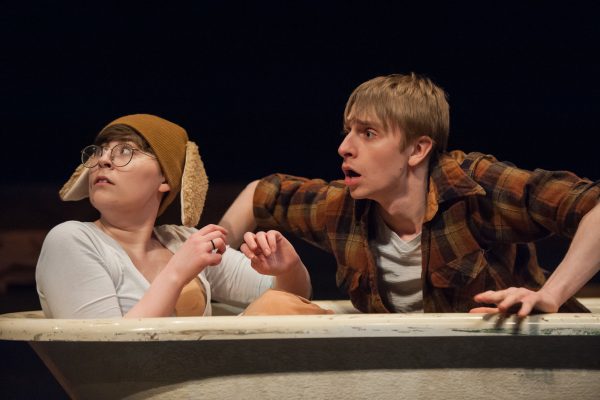
UAA theatre students rehearse "Earthquake '64." (Photo by James Evans / University of Alaska Anchorage)
Apart from me, it's completely student-created. We began in my Ecology and Dramaturgy class in spring 2017 with research and investigating how to bring research into performance. Then, I taught a Devised Theatre class in fall 2017, where we focused on creating the story and characters and began thinking about structure. We began evening rehearsals in November, bringing in a couple of additional actors to make up for a couple of students from the class who weren't able to do the performances. All told, there have been about 20 students who've been directly involved in creating the piece that audiences will see on stage.
Why did you decide a play would be a good way to explore this momentous historical topic?
We've been really inspired by the conversations we've had with each other and, especially, with the survivors we've talked to. And, recently, we've seen several survivors talking to our Facebook page to tell their stories. Theatre is a community-based thing; it takes place directly in front of the audience. We're not Californians making a story about Alaska and we're not Alaskans making a story about California. We're Alaskans who live in the place that was impacted by this event, alongside people who have direct and indirect experience with the earthquake and its aftermath. We can have a different kind of conversation in theatre, in contrast to film or TV, because actor and audience are in direct contact. And, since we've created the piece ourselves, we can reflect as we go on what the audience responds to and make tweaks and changes to the story and how we tell it.
How did the students go about researching the quake and then deciding what music, movement and stories to include?
The research phase was structured around specific themes we identified, and then we divided up the workload. Once we had that material, everyone began to pursue the things that were most interesting to them. Once we had a wide range of material, we worked together to shape it into a finished piece; inevitably some things didn't fit in and we had to cut them out. All of that material is saved, and maybe someday it will find a purpose.
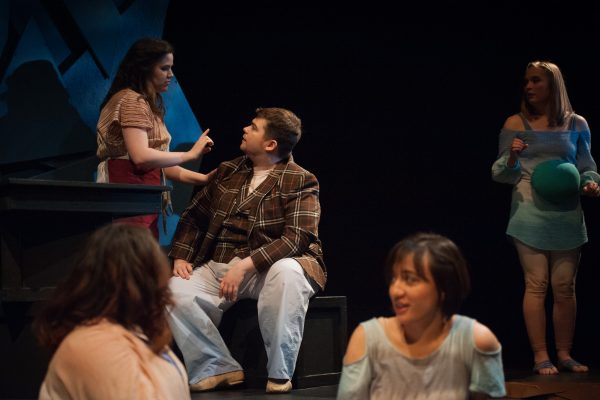
UAA theatre students rehearse "Earthquake '64." (Photo by James Evans / University of Alaska Anchorage)
Compiled by Tracy Kalytiak, for UAA Office of University Advancement
 "UAA play delves into the impact of Alaska’s magnitude 9.2 quake on culture, communities" is licensed under a Creative Commons Attribution-NonCommercial 4.0 International License.
"UAA play delves into the impact of Alaska’s magnitude 9.2 quake on culture, communities" is licensed under a Creative Commons Attribution-NonCommercial 4.0 International License.













